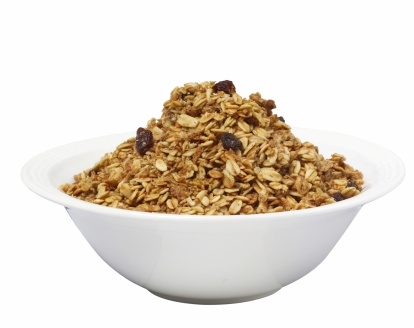Dietary Fats And Obesity
Excessive fat intake is a major causative factor in obesity, high blood pressure, coronary heart disease, and colon cancer, and has been linked to a number of other disorders as well. To understand how fat intake is related to these health problems, it is necessary to understand the different types of fats available and the ways in which these fats act within the body.
Fats are composed of building blocks called fatty adds. There are three major categories of fatty acids saturated, polyunsaturated, and monounsaturated. These classifications are based on the number of hydrogen atoms in the chemical structure of a given molecule of fatty acid.
Saturated fatty adds are found primarily in animal products, including dairy items, such as whole milk, cream, and cheese, and fatty meats like beef, veal, lamb, pork, and ham. The fat marbling you can see in beef and pork is composed of saturated fat. Some vegetable products including coconut oil, palm kernel oil, and vegetable shortening are also high in saturates. The liver uses saturated fats to manufacture cholesterol. The excessive dietary intake of saturated fats can significantly raise the blood cholesterol level, especially the level of low density lipoproteins (LDLs), or "bad cholesterol." (For more information about cholesterol, see HIGH CHOLESTEROL in Part Two.) Guidelines issued by the National Cholesterol Education Program (NCEP), and widely supported by most experts, recommend that the daily intake of saturated fats be kept below 10 percent of total caloric intake. However, for people who have severe problems with high blood cholesterol, even that level may be too high.
Polyunsaturated fatty adds are found in greatest abundance in corn, soybean, safflower, and sunflower oils. Certain fish oils are also high in polyunsaturates. Unlike the saturated fats, polyunsaturates may actually lower the total blood cholesterol level. In doing so, however, large amounts of polyunsaturates also have a tendency to reduce levels of high density lipoproteins (HDLs), or "good cholesterol." For this reason and because polyunsaturates, like all fats, are high in calories for their weight and volume the NCEP guidelines state that an individual's intake of polyunsaturated fats should not exceed 10 percent of total caloric intake.
Monounsaturated fatty acids are found mostly in vegetable and nut oils such as olive, peanut, and canola. These fats appear to reduce blood levels of LDLs without affecting HDLs in any way. However, this positive impact upon LDL cholesterol is relatively modest. The NCEP guidelines recommend that intake of monounsaturated fats be kept between 10 and 15 percent of total caloric intake.
Although most foods including some plant derived foods contain a combination of all three types of fatty acids, one of the types usually predominates. Thus, a fat or oil is considered "saturated" or "high in saturates" when it is composed primarily of saturated fatty acids. Such saturated fats are usually solid at room temperature. Similarly, a fat or oil composed mostly of polyunsaturated fatty acids is called "polyunsaturated," while a fat or oil composed mostly of monounsaturated fatty acids is called "monounsaturated."
One other element, trans fatty acids, may play a role in blood cholesterol levels. Also called trans fats, these substances occur when polyunsaturated oils are altered through hydrogenation, a process used to harden liquid vegetable oils into solid foods like margarine and shortening. One recent study found that trans monounsaturated fatty acids raise LDL cholesterol levels, behaving much like saturated fats. Simultaneously, the trans fatty acids reduced HDL cholesterol readings. Much more research on this subject is necessary, as studies have not reached consistent and conclusive findings. For now, however, it is clear that if your goal is to lower cholesterol, polyunsaturated and monounsaturated fats are more desirable than saturated fats or products with trans fatty acids. Just as important, your total calories from fat should not constitute more than 20 to 25 percent of daily calories.
Related Articles
-
Learn How to Lose a Fat Stomach - 4 Foods to Avoid
It all sounds so straightforward - simpl
-
Healthy Diet Lies Exposed Part I
Food Too Deadly for Pigs Sold to Humans: when synthetic varnishes were
-
Should You Join An Online Weight Loss Program?
Have you ever heard of an online weight loss program before? If this
-
Tips On How You Can Stick To Your Weight Loss Plan
There is no easy way to lose weight permanently and safely. Even li
-
Kick Start Your Monday Diet With These 5 Foods!
Weekends are not always
-
Lowest Carb Atkins Diets
Exactly what are the particular benefits
- DON'T MISS
- Its National Nutrition Month And Registered Dietitian Day!
- Why Walking Is The New Running
- Weight Loss Programs – Do Any of Them Work?
- Easy Weight Loss Tips to Quickly Lose Weight
- What 27 Years Of Meditating Has Taught Me About True Happiness
- Mysteries Of Syndrome X Revealed
- Simple Powerful Tips To Lose Belly Fat
- 15-Minute Seared Tuna with Sage
- Weight Loss Surgery – Once and Forever
- Losing Weight Without Diets




